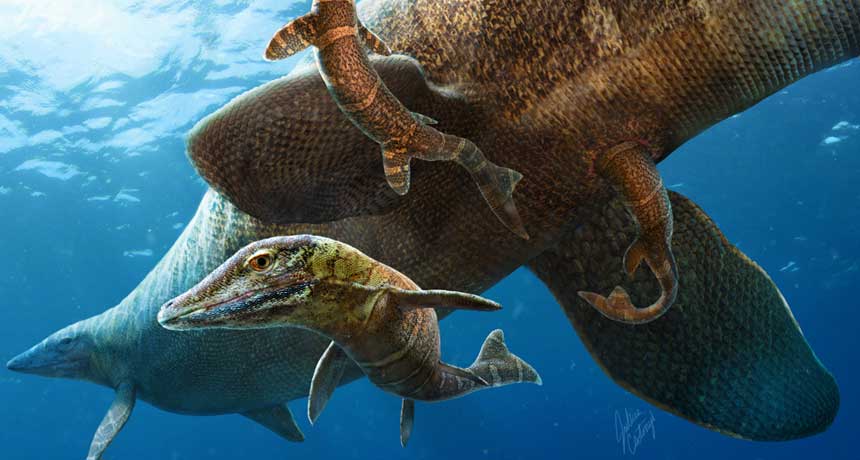Questions for ‘The real sea monsters’

Mosasaurs, like those depicted here, may have given birth to their young while out at sea.
Illustration by Julius T. Csotonyi
Share this:
- Share via email (Opens in new window) Email
- Click to share on Facebook (Opens in new window) Facebook
- Click to share on X (Opens in new window) X
- Click to share on Pinterest (Opens in new window) Pinterest
- Click to share on Reddit (Opens in new window) Reddit
- Share to Google Classroom (Opens in new window) Google Classroom
- Click to print (Opens in new window) Print
To accompany feature ‘The real sea monsters‘
SCIENCE
Before reading:
1. Why are sharks considered to be top predators in the ocean? What makes them so fearsome?
2. What kinds of specialized characteristics might you need to live in an ocean environment?
During reading:
1. What is special about the pelvis of a dinosaur?
2. What happened 252 million years ago?
3. Why do scientists think that all ichthyosaurs were ocean dwellers?
4. What are melanosomes?
5. How many neck bones are found in a mammal?
6. What is the biggest difference between a plesiosaur and a pliosaur?
7. Where does the word “mosasaur” come from?
8. Based on what you read in the story, why would it have been difficult for mosasaurs to move about on land?
9. Why do paleontologists want to find a terrestrial ancestor of ichthyosaurs?
After reading:
1. Museums put some fossils on display, but they may keep many others in storage for years, even though it costs them money. Why would the people who run museums consider that to be a good use of funds? (Hint: How did it help some researchers mentioned in this story?)
2. Using information from the story, find five examples of convergent evolution between ancient marine reptile and modern sea creatures, such as whales and sharks. Now suggest three more examples of convergent evolution for land reptiles and creatures, based on concepts that you learned in the story.
MATHEMATICS
1. The first mosasaurs showed up some 98 million years ago. How many years was that after the time when the first ichthyosaurs appeared in the fossil record?
2. An adult bottlenose dolphin can grow up to 4.2 meters (14 feet) long. How many times larger was the largest-known ichthyosaur?